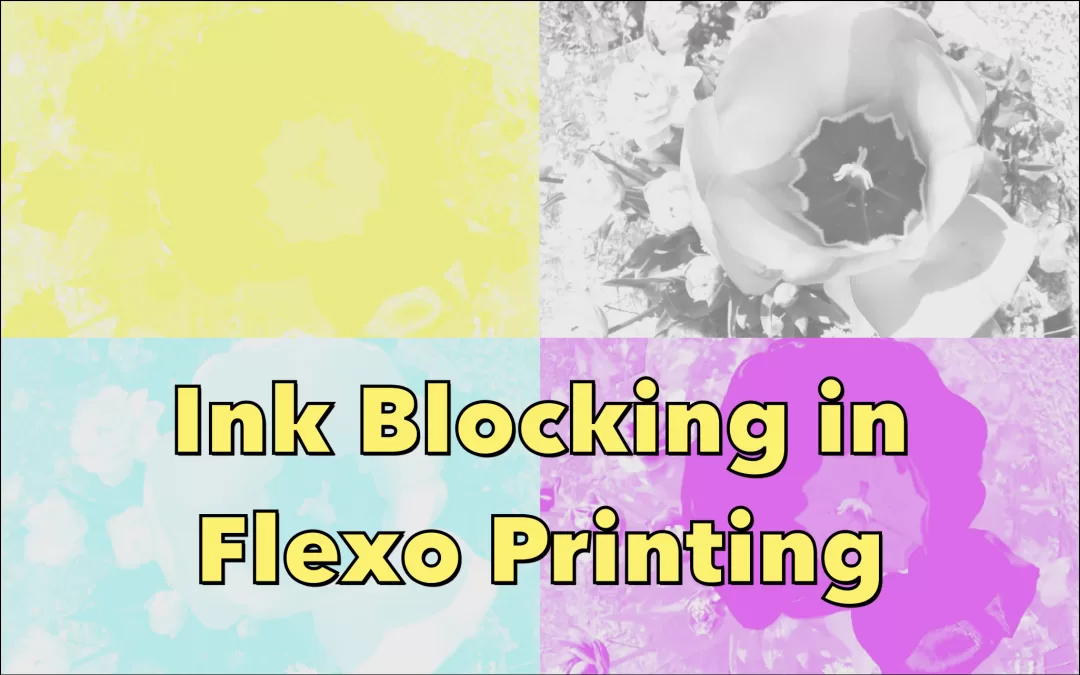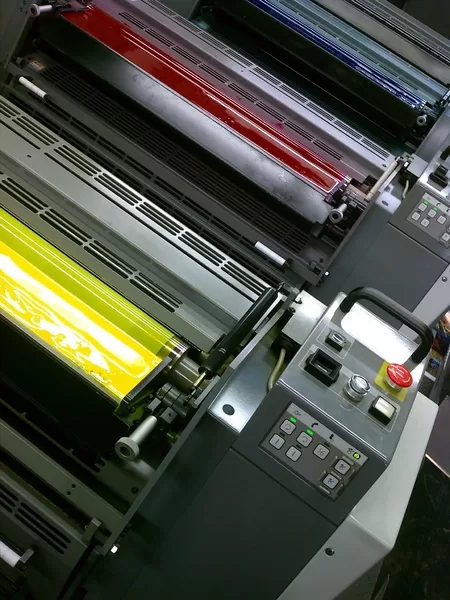This article is part of the FLEXO FLAW FIXING series
In the sophisticated world of flexo printing, there are a myriad of challenges that can get in the way of achieving the perfect print job. One such headache is blocking, a condition that can frustrate operators and disappoint clients. Blocking in flexo printing occurs when printed sheets or rolls stick together, making it difficult to separate them without damage. This sticking can result in cracked or damaged surfaces where the ink or coating has not set or cured properly. Blocking is visible as sheets may come apart, with ink lifting off one surface and sticking to the other, creating a patchy, uneven finished product.
Let’s have a look at the possible causes of blocking in flexo printing and how to eliminate them, as well as practical solutions to avoid this annoying problem.
Inadequate Substrate Selection
Some substrates may promote blocking due to their characteristics. Choose substrates with appropriate absorbency levels and good dimensional stability. If issues persist, discuss alternative substrate options with your supplier that are compatible with your inks and press conditions.
High Ink Adhesion
High adhesion inks can lead to blocking, especially when subsequent layers are applied. Select inks with lower tack values for layers that stack or opt for specially formulated inks designed to minimise this issue. Keep close communication with ink suppliers, requesting inks tailored to your specific needs and printing conditions.
Excessive Ink Film Thickness
Over-inking can exacerbate blocking, as thicker layers of ink take longer to dry. Employ finer anilox rolls with a lower BCM (billion cubic microns) to apply a thinner and more uniform layer of ink. Pay attention to the viscosity of the ink as well; maintaining it within the recommended range can substantially reduce ink film thickness.
Inadequate Drying or Curing
One primary cause of blocking is ink that hasn’t fully dried. If the ink remains tacky, the printed layers will stick together under pressure. To mitigate this, ensure your drying or curing units function optimally; intensifying the output or prolonging the drying time can be beneficial. Regularly check that the dryer is not in clog and the air flow is consistent.
Suboptimal Coating or Varnishing
Coatings or varnishes that are not adequately cured can contribute to blocking. If you are using UV varnishes, verify the strength of the UV lamps on a regular basis and replace them as necessary. For water-based or solvent-based varnishes, ensure their complete evaporation by optimising drying units.
High Stacking Weight or Pressure
The weight of stacks can press the sheets together before the ink is dry, leading to blocking. Be cautious with stacking height, and consider interleaving sheets with a slip sheet to distribute pressure more evenly. Also, facilitate faster drying by reducing the stack sizes, therefore, lessening the pressure on the printed surfaces.
Ambient Conditions
Humidity and temperature in the press room can influence drying times and ink adhesion. Maintain a controlled environment with consistent humidity and temperature levels. Printing conditions should remain stable during the print run to avoid any variations that could cause blocking.
Improper Storage
Post-press, the manner in which the products are stored can foster blocking. Store printed materials in a cool, dry environment and avoid plastic wrappings that could trap solvent or moisture.
In summary, blocking in flexo is preventable with vigilant process control and a keen understanding of each element of the printing process. From selecting the right inks and substrates to fine-tuning the drying process and storage conditions, each factor plays a vital role in mitigating this defect.
Communication with ink and substrate suppliers can lead to customised solutions that further reduce the risk of blocking, ensuring that prints separate cleanly and maintain their intended quality. Remember, prevention is always better than cure, so proactively addressing each potential cause of blocking can save both time and resources, and consistently deliver exceptional flexo print jobs.





![[Flexo Flaw Fixing] Mechanical Damage to the Print Image Mechanical damage to the print image in flexo](https://flexopedia.net/wp-content/uploads/2022/07/059_Mechanical_Damage-jpg.webp)